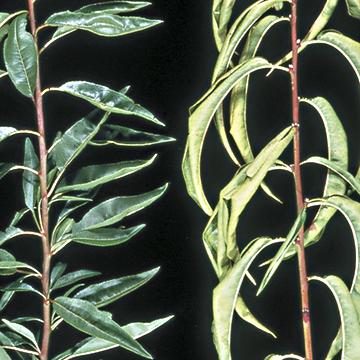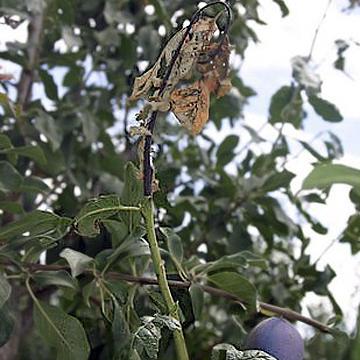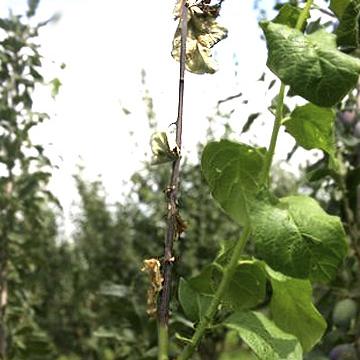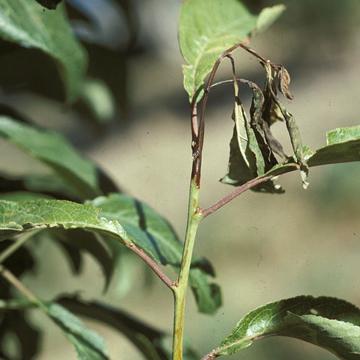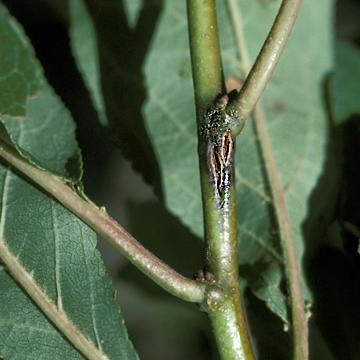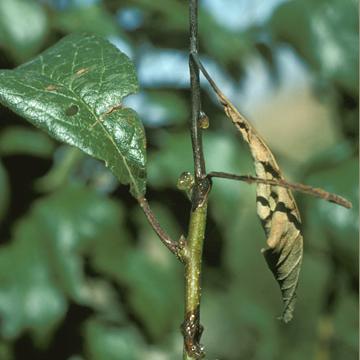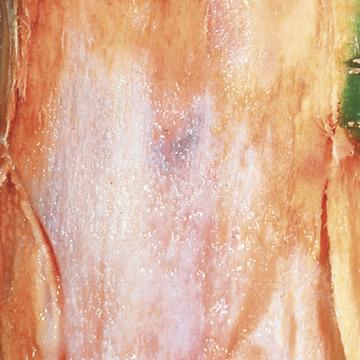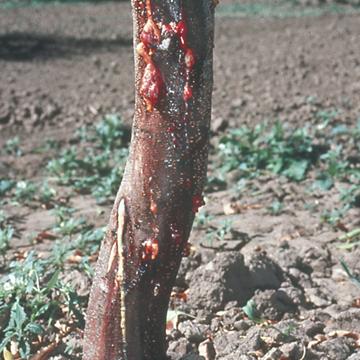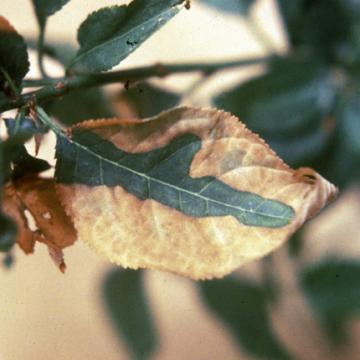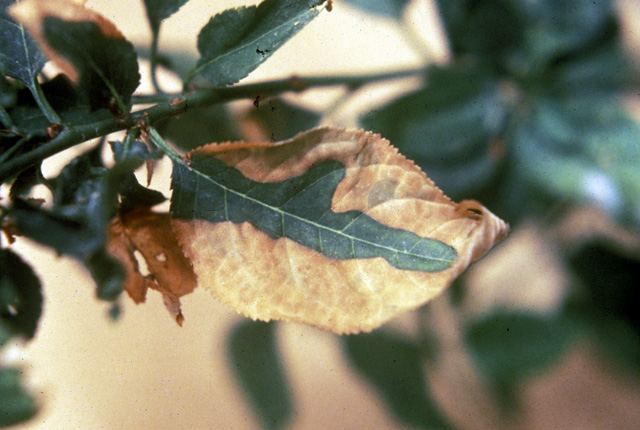DISEASE: European stone fruit yellows
HOST: Almond
The disease causes yellowing and rolling of leaves (right). Leaves become thick and rough in texture. Healthy leaves (left).
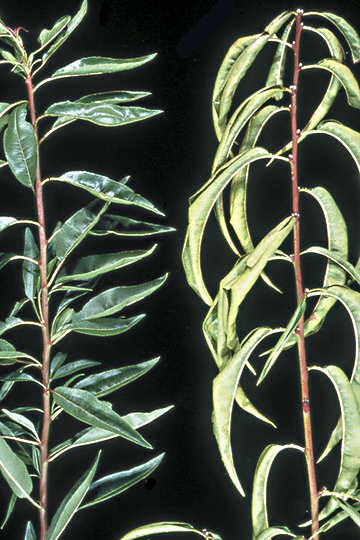
European stone fruit yellows | Almond
DISEASE: European stone fruit yellows
HOST: Almond (Prunus dulcis)
PATHOGEN: 'Candidatus Phytoplasma prunorum'
PATHOGEN SYNONYM: Phytoplasma Apple proliferation group
SOURCE: E. Seemueller
DISEASE: Fire blight
HOST: Plum
Typical symptoms of fire blight-infected, young European plum shoot.
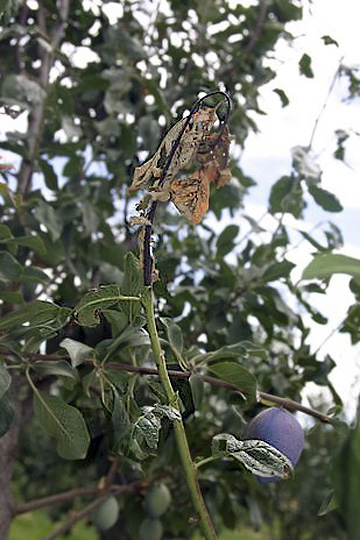
Fire blight | Plum
DISEASE: Fire blight
HOST: Plum (Prunus domestica 'Empress')
PATHOGEN: Erwinia amylovora
SOURCE: S. Mohan
DISEASE: Fire blight
HOST: Plum
Diseased terminal shoot and advancing infection.
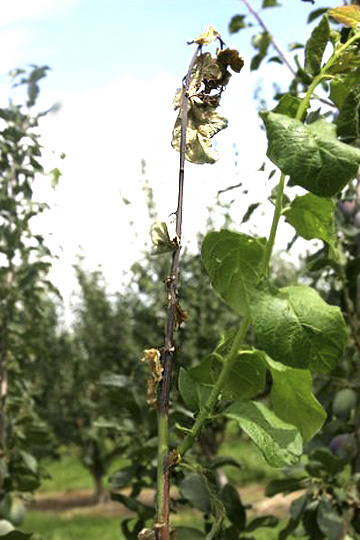
Fire blight | Plum
DISEASE: Fire blight
HOST: Plum (Prunus domestica 'Empress')
PATHOGEN: Erwinia amylovora
SOURCE: S. Mohan
DISEASE: Fire blight
HOST: Plum
Crook-necked terminal end of succulent young stem, characteristic of fire blight infection of Japanese-type plum.
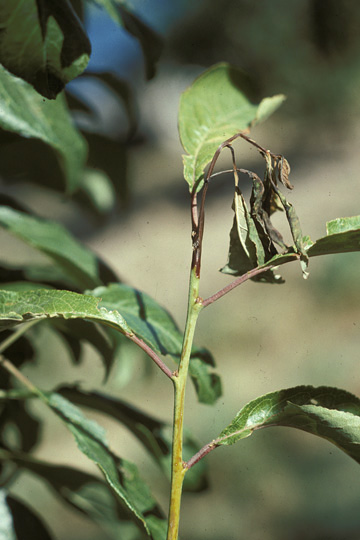
Fire blight | Plum
DISEASE: Fire blight
HOST: Plum (Prunus salicina 'Fortune')
PATHOGEN: Erwinia amylovora
SOURCE: S. Mohan
DISEASE: Fire blight
HOST: Plum
Shoot with stem infection.
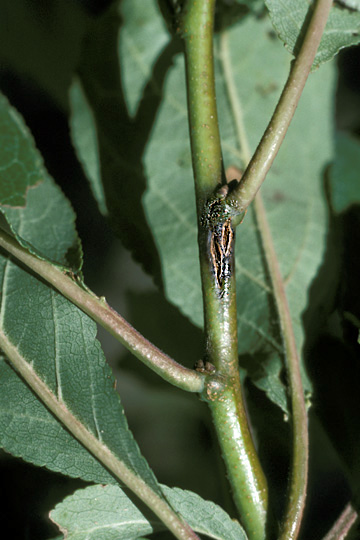
Fire blight | Plum
DISEASE: Fire blight
HOST: Plum (Prunus salicina 'Friar')
PATHOGEN: Erwinia amylovora
SOURCE: S. Mohan
DISEASE: Fire blight
HOST: Plum
Stem and leaf infection with bacterial ooze on stem.
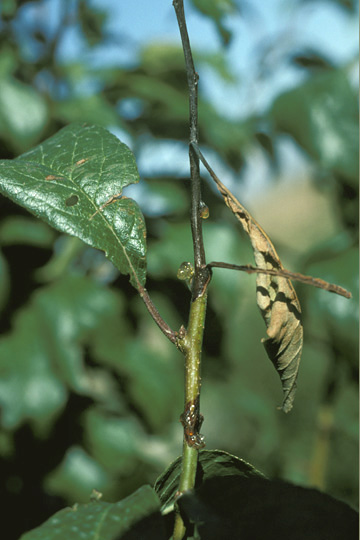
Fire blight | Plum
DISEASE: Fire blight
HOST: Plum (Prunus salicina 'Friar')
PATHOGEN: Erwinia amylovora
SOURCE: S. Mohan
DISEASE: Foamy canker
HOST: Almond
White, macerated tissues near cambium region is characteristic of disease. Foam is usually associated with cankers. The disease is suspected to be bacterial but the causal agent has not been identified.
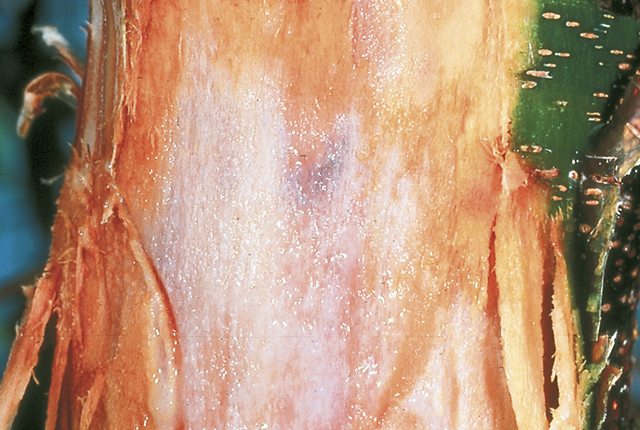
Foamy canker | Almond
DISEASE: Foamy canker
HOST: Almond (Prunus dulcis)
PATHOGEN: Causal agent unknown
SOURCE: B. Teviotdale
DISEASE: Foamy canker
HOST: Almond
Amber red-colored ooze sliding down the trunk. The causal agent has not been identified.
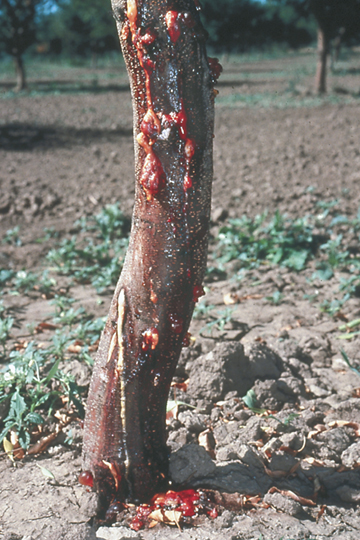
Foamy canker | Almond
DISEASE: Foamy canker
HOST: Almond (Prunus dulcis)
PATHOGEN: Causal agent unknown
SOURCE: B. Teviotdale


